Brent Luebbert, LMT defying gravity. Photo by Josh Murry-Hawkins.
Brent (he/him) has been a core member of the Turning Pointe team for the last few years. If you’re just hearing about him now, it’s probably because he is usually booked!
His decade-long career as a professional dancer and the high demands on his body that comes with it, give him a deep knowledge and interest in pain and injury management. Brent approaches massage intuitively and has experience treating many musculoskeletal conditions including neck pain, low back pain, shoulder pain and lower leg and ankle conditions. He enjoys helping active people move out of pain and recover from injury and treating those with longstanding issues and chronic pain.
You can find Brent’s full bio here — and continue reading below to learn about how he started his massage therapy journey, the ways his dancing career and his massage practice have influenced each other, how he approaches complex cases, and more.
Q: What inspired you to pursue the path of massage therapy?
Brent Luebbert, LMT in the Turning Pointe lobby.
A: I had a few different inspirations that led me to massage. The earliest occurred in my high school dance classes when we'd give little massages to each other. My dance friends seemed to like my massages and I liked helping my friends.
The second big inspiration was when I dislocated a rib while apprenticing with a dance company after high school. I tried going to a chiropractor and they weren't able to get it back in. I also tried seeing a physical therapist and they helped, but it was still difficult to breath and move.
The directors of the company suggested I see a sports massage therapist they knew who has experience with dancers. The therapist did a series of excruciating things, but by the end I could breath fully and move without restrictions! It's about this time I started thinking more seriously about pursuing massage therapy after my dance career.
Over the course of my dance career I primarily got work from two phenomenal massage therapists in town with very different but effective approaches. The diversity of the work that I received has influenced my approach as a massage therapist to be flexible in my approach, sometimes being very focused on local dysfunction or taking a larger whole body interconnected view.
Q: What can a new patient expect in their first massage with you?
A: For an initial massage, we will always start with a short conversation about what is bringing the patient in that day. This may include some range of movement assessments depending on what is going on. From that point, the massage itself will vary and be tailored to the specific patient.
If a patient is coming in for general body aches or stiffness with no specific injury, I like to do a full body massage so I can get to know how and where that person may be holding tension and if the point where they are feeling the pain is local or the result of dysfunction somewhere else in the body. If someone is coming in for a specific injury or issue, then I will focus almost entirely on that area. I also look for other issues that may be influencing the primary concern and may address those as well.
Q: How does your other career as a professional dancer influence your massage therapy practice, and vice versa?
A: My dance career gives me a good intuitive sense of how the body should move and how it does move when working with or around any dysfunction.
My approach to dancing has changed the most since I became a massage therapist. I'm much more conscious of anatomy and kinesiology and how I'm doing the things that I'm doing. I’m always way more aware of when I need a massage myself!
Brent defying gravity. Again. Photo by Michael Shay.
Q: What is something you've learned over your years of practicing massage therapy that has surprised you?
A: There are actually a few things that really stand out, but the biggest one is also the most vague and the hardest for me articulate: every body is structurally similar but also wildly different.
I've had days where every patient describes the same or very similar issues and while I'm working on the same area for each person and using similar techniques, the actual muscle tissues present such a wide variety of quality and tone. It’s surprising how some peoples tissue responds better with one technique versus another. It really does feel like I’m doing some sort of intricate problem solving activity, just trying different techniques and approaches until I find one that works with that specific persons body.
Brent treating a patient at the clinic.
Q: How do you approach complex cases with issues like chronic pain or multifaceted injury?
A: My approach really depends on the specific issue or injury, but generally I try to identify if there is a root injury that is stemming other issues and resolve that before chasing down the ancillary issues. If the root issue is very stubborn, I will sometimes reverse my order, and work on relieving the peripheral issues first, which can sometimes calm the tissue enough to make more progress on it.
I've found that the older the injury, the more sessions it'll take to resolve it. If the pain or injury is a result of something the person does for work or some daily repetitive action, it may require regular visits to maintain a pain-free lifestyle. I may also refer that person to a physical therapist or suggest something that will alter the way they perform what is causing them pain, so that they can continue to do the activity but in a healthier or more knowledgeable way.
Q: How do you most enjoy spending your time outside of the clinic?
A: At the moment, I'm trying to teach myself ukulele. If anyone wants to teach me how to play ukulele (or give singing lessons) in exchange for massages, let me know!
I enjoy taking dance classes and want to start either tango or salsa classes with my girlfriend, but finding time has been hard. I also like reading and playing video games. I just started playing Dungeons and Dragons with my family and some family friends which has been fun.





